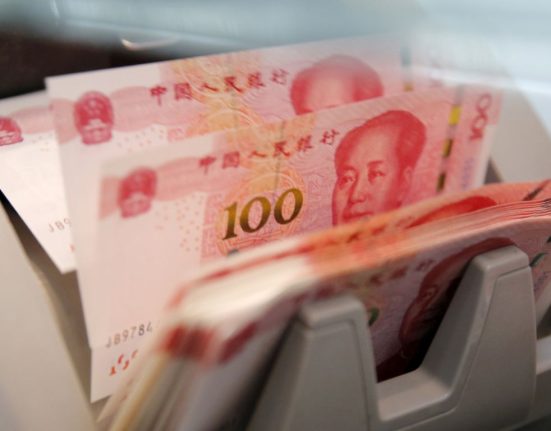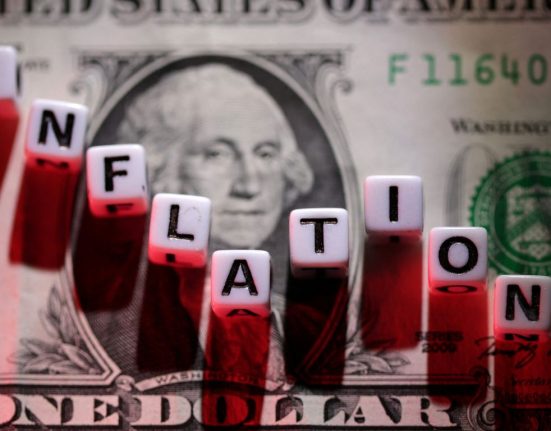Euro and Sterling Slump Against US Dollar, Fueling Market Volatility
The euro and sterling are facing significant challenges as they continue to slide against the US dollar, intensifying concerns in financial markets. Following Wednesday’s 0.45% slide, the euro slipped another 0.25% to $1.08845. Meanwhile, the pound sterling edged down by 0.13% to $1.2620, extending the previous session’s substantial 0.88% tumble. This article delves into the factors behind the weakening of these currencies, the implications for global markets, and the potential consequences for the broader economy.
Factors Driving the Euro’s Decline
The euro’s recent downward trajectory against the US dollar can be attributed to a combination of factors. Firstly, concerns over the economic recovery in the Eurozone have played a significant role. Uncertainty surrounding the handling of the COVID-19 pandemic and the potential impact of new variants have dampened investor sentiment, leading to a decrease in demand for the euro. Additionally, ongoing tensions within the European Union (EU) regarding budgetary issues, coupled with political uncertainty in some member countries, have contributed to the euro’s depreciation. These factors have fueled market volatility, impacting trade flows and investment decisions.
Sterling’s Weakening Amidst Brexit Woes
Brexit continues to cast a shadow over the UK economy, with the pound sterling experiencing notable turbulence. The recent decline against the US dollar can be partly attributed to ongoing concerns about the trade relationship between the United Kingdom and the European Union. Despite the post-Brexit trade deal, uncertainties remain, particularly regarding regulatory alignment and market access. These uncertainties have negatively impacted investor confidence in the pound, resulting in its extended slide against the US dollar. Moreover, domestic economic challenges, such as sluggish growth and rising inflationary pressures, have added to the downward pressure on sterling.
Global Implications of Currency Depreciation
The weakening of the euro and sterling against the US dollar holds various implications for global markets. Firstly, it affects trade dynamics between these currency zones. A weaker euro and sterling make imports from the Eurozone and the UK more expensive, potentially impacting demand for their goods and services. Additionally, this currency depreciation can influence the competitiveness of European and British businesses in international markets, posing challenges for exporters.
Furthermore, the decline in the euro and sterling can fuel concerns about global economic growth. Given the interconnectivity of financial markets, significant currency fluctuations can ripple across borders and impact investor sentiment worldwide. The uncertainty generated by the sliding euro and sterling may lead to cautious investment strategies and a slowdown in international capital flows, potentially stifling economic recovery efforts in various regions.
Potential Consequences for the Global Economy
The consequences of the euro and sterling depreciation extend beyond trade dynamics. They can have a significant impact on monetary policy decisions and the overall stability of the global economy. Central banks, such as the European Central Bank (ECB) and the Bank of England (BoE), closely monitor currency movements when formulating policies.
In response to the weakening euro, the ECB might consider implementing measures to stimulate the Eurozone economy, such as adjusting interest rates or implementing additional quantitative easing. Similarly, the BoE might be prompted to reassess its monetary policy stance to mitigate the effects of sterling’s decline. Such actions can have far-reaching consequences on inflation, borrowing costs, and economic growth both within these regions and beyond.
Looking Ahead: Factors to Watch
Various factors will play a pivotal role in determining the future trajectory of the euro and sterling against the US dollar. Firstly, the resolution of the ongoing COVID-19 pandemic and the successful containment of new variants are critical to restoring investor confidence in the Eurozone and the UK. Furthermore, the resolution of trade frictions and the establishment of stable trade relationships between the UK and the EU will be essential for the recovery of the pound sterling.
Moreover, economic indicators, such as GDP growth, inflation rates, and labor market data, will continue to shape currency movements. Any significant developments in monetary policies, particularly decisions made by central banks, are likely to have an impact on the exchange rates. Geopolitical events, such as elections or policy changes, may also introduce additional volatility to the currency markets.
Conclusion
The recent decline of the euro and sterling against the US dollar reflects the prevailing economic uncertainties facing the Eurozone and the UK. The combination of factors, including concerns over the economic recovery, political tensions, and Brexit-related anxieties, has fueled the downward pressure on these currencies. The implications extend beyond trade dynamics, potentially influencing investor sentiment and global economic growth. As policymakers and market participants closely monitor these currency movements, future developments in the Eurozone and the UK will be crucial in shaping the path of the euro and sterling, and their implications for the broader global economy.










